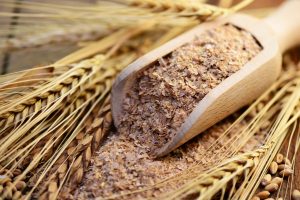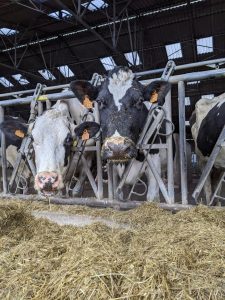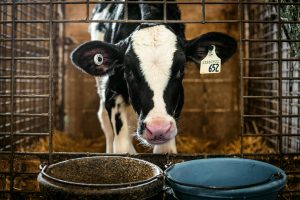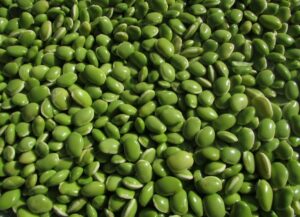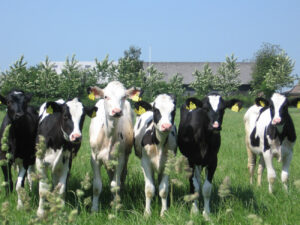Álvaro García
The type and quality of lipid sources used in cattle diets are crucial in determining both their nutritional value and economic feasibility. When incorporating fats into ruminant feed, factors such as digestibility, fatty acid profile, oxidation stability, and interactions with gut microbiota must be carefully considered. Practical concerns, including susceptibility to rancidity, storage stability, and environmental conditions—such as temperature fluctuations that affect fat handling—also play a significant role in maintaining feed quality and optimizing animal performance.
Unlike monogastric animals, ruminants depend on microbial fermentation in the rumen, where excessive inclusion of unsaturated fats can disrupt microbial populations. This disruption can impair fiber digestion and, in dairy cows, contribute to milk fat depression. The underlying issue is that unsaturated fatty acids are toxic to many rumen microbes, particularly cellulolytic bacteria essential for fiber breakdown. As a result, balancing fat type and inclusion rates is critical to avoid negative effects on rumen function while still enhancing energy density in cattle diets.
Bypass fats
Also known as rumen inert fats, bypass fats are designed to avoid rumen fermentation and be absorbed directly in the small intestine. They are particularly beneficial in dairy cows, where energy demands are highest, especially during early lactation. In addition to improving lactation performance, bypass fats play a critical role in reproductive efficiency. Energy deficiency is a major contributor to fertility issues in dairy cows, leading to delayed ovulation and poor conception rates. Supplementing with bypass fat can help reduce the negative energy balance postpartum, shortening the interval to first ovulation. It also supports improved progesterone production, which enhances embryo survival and overall reproductive success, leading to better conception rates. Another key advantage of bypass fat supplementation is its contribution to body condition and metabolic health. High-yielding dairy cows require a concentrated energy source, and bypass fats provide this without increasing the risk of acidosis or digestive disturbances often associated with excessive starch feeding.
While energy demands in beef cattle are lower than in high-producing dairy cows, lipid supplementation can still offer notable advantages. Supplemental fats can improve feed efficiency by enhancing feed conversion, particularly in finishing diets where increasing energy density is crucial. Additionally, fat supplementation has been shown to enhance carcass quality by improving marbling and meat tenderness, thereby increasing carcass value. In hot climates, incorporating fats into the diet can help reduce the effects of heat stress. By replacing some starch with fat, metabolic heat production decreases, allowing cattle to maintain performance during periods of elevated temperatures. These benefits highlight the value of carefully managed lipid supplementation in beef cattle diets.
Despite these benefits, lipid supplementation in cattle has its challenges. If unsaturated fats are not effectively managed, they can alter rumen fermentation, leading to milk fat depression. Cost considerations also play a role, as bypass fats tend to be more expensive than conventional fat sources, requiring careful economic evaluation. Additionally, variability in fat sources can influence their effectiveness in rations, as differences in quality and consistency may impact their performance.
How much to feed?
When formulating dairy cow diets, managing fat inclusion is essential to optimize milk production without compromising rumen health. Typically, the total fat content in a cow’s diet should not exceed 6% to 7% of dry matter to avoid negative impacts on fiber digestion and rumen function. Within this limit, bypass fat—or rumen-protected fat—can be strategically included to boost energy density without interfering with microbial activity in the rumen. Bypass fats are designed to resist ruminal degradation and instead are digested in the small intestine, providing an efficient energy source. Generally, bypass fat supplementation ranges from 0.5% to 2% of dry matter intake, depending on the cow’s production level and energy demands, especially during peak lactation or periods of negative energy balance. However, excessive bypass fat can reduce dry matter intake and impair overall nutrient absorption, so balancing energy needs with rumen health remains crucial in diet formulation.
Strategic supplementation by parity
Feeding bypass fat based on parity can offer significant advantages, as the energy demands, metabolic priorities, and reproductive challenges differ between primiparous and multiparous cows. Primiparous cows face the dual challenge of supporting both growth and milk production, often with a lower dry matter intake capacity compared to older cows. This increases their risk of negative energy balance, particularly during early lactation. Including bypass fat in their diets provides a concentrated energy source without increasing feed volume, helping to meet their energy needs more efficiently. This not only supports continued growth but also aids in maintaining body condition and promoting a timely resumption of reproductive cycles postpartum. Additionally, bypass fats help reduce metabolic stress by supplying energy without the added risk of ruminal acidosis often associated with high-starch diets.
In contrast, multiparous cows, with their higher milk production potential and greater DMI capacity, have different energy dynamics. These cows often experience significant energy deficits during early lactation as they work to reach peak milk yield. Bypass fats play a crucial role here by providing the extra energy needed to sustain elevated levels of milk production. Furthermore, as multiparous cows are more prone to body condition loss in early lactation, bypass fats help minimize excessive mobilization of body reserves, reducing the risk of metabolic disorders such as ketosis and improving overall postpartum recovery. The energy provided by bypass fats also supports hormonal balance, leading to better reproductive performance, with improved ovulation and conception rates.
Bypass fats available in the market
One of the most common types of bypass fats in the market are the calcium salts of fatty acids. These are produced by reacting fatty acids—typically derived from palm oil—with calcium to create insoluble salts. The resulting product is dry, granular, and easy to incorporate into total mixed rations (TMR). Calcium salts are known for their high energy density and their minimal impact on rumen fermentation. They are particularly effective at enhancing milk yield and butterfat content. However, if overfed, they can reduce dry matter intake (DMI), so careful diet balancing is essential. Popular commercial brands of calcium salts include Megalac® and Megafat®.
Another widely used option is prilled (hydrogenated) fats, which are created by hydrogenating vegetable oils like palm or soybean oil and forming them into small, solid pellets. They have a high melting point—typically over 54°C, which makes them rumen-inert. They are easy to manage and blend into rations and are particularly effective at increasing energy density without negatively affecting rumen microbial activity. Prilled fats are commonly used to boost milk fat production, but because they contain fewer unsaturated fatty acids, their sole use may not fully support reproductive performance. Examples of prilled fat products include Energy Booster® and Golden Flake®.
Fatty acid distillates, another option in the market, are byproducts of vegetable oil refining, often sourced from palm or soybean oil. These distillates contain a mixture of free fatty acids and triglycerides and typically have a waxy or semi-solid appearance. Their main appeal lies in cost-effectiveness, making them a budget-friendly energy source. However, they may vary in fatty acid composition, leading to inconsistent performance outcomes, and their lower purity can affect digestibility and energy availability.
If the goal is to improve reproductive performance and immune function in cows, rumen-protected unsaturated fats are a valuable option. These fats, rich in omega-3 and omega-6 fatty acids, are specially coated or chemically treated to resist rumen biohydrogenation, allowing unsaturated fatty acids to reach the small intestine intact. Supplementing cattle diets with these fats can enhance milk yield, fertility, and overall health. Fish oil-based products are common examples in this category. While these fats offer significant benefits, they tend to be more expensive than saturated fat sources.
Another widely adopted bypass fat comes from palm-based rumen-inert fats, which are derived from fractionated palm oil and consist of long-chain saturated fatty acids, particularly palmitic acid (C16:0). These are often available in prilled or flaked form and are recognized for their ability to increase milk fat content and support body condition in high-producing dairy cows. However, for cows in early lactation, where energy demands and metabolic stress are highest, balancing these fats with other nutrient sources is critical to avoid negative energy balance. Popular products in this category include EnerGII® and Nutri-Palmitic®.
Rancidity and storage issues
While bypass fats offer several nutritional advantages, managing their stability during storage is equally critical to maintain feed quality. When adding oil to cattle diets, especially unprotected or unsaturated fats, caution is necessary due to their higher susceptibility to lipid oxidation. This process, known as peroxidation, occurs when unsaturated fatty acids react with oxygen, leading to the formation of lipid hydroperoxides that eventually decompose into harmful secondary compounds like aldehydes, ketones, and short-chain fatty acids. These by-products can impart rancid odors, off-flavors, and pose potential toxicity risks, reducing feed palatability and nutrient quality. The process occurs in three stages:
- Initiation – Free radicals are generated when unsaturated FA react with oxygen, creating lipid radicals. This is often catalyzed by iron and copper or by exposure to heat, light, and moisture.
- Propagation – Lipid radicals react with more oxygen, forming lipid hydroperoxides. These compounds are unstable and continue generating additional radicals, accelerating oxidation.
- Termination – The reaction eventually slows when all reactive molecules have been oxidized or when antioxidants neutralize the radicals.
As lipid hydroperoxides break down, they form aldehydes, ketones, and other secondary oxidation compounds that negatively impact animal health. Aldehydes can damage cellular membranes and proteins, leading to oxidative stress and inflammation, with malondialdehyde (MDA) specifically known to impair growth and immune function. Ketones contribute to the rancid smell of oxidized fats, reducing feed palatability and intake. Additionally, short-chain fatty acids formed during peroxidation can disrupt gut health and digestion, further compromising overall animal performance. Short-chain fatty acids formed during peroxidation can disrupt gut health and digestion.
Several environmental and management factors influence the rate of peroxidation. Oxygen exposure plays a crucial role, as oxidation requires the presence of oxygen, making proper storage essential to minimize deterioration. Heat and light also accelerate oxidation reactions, with higher temperatures and ultraviolet (UV) light speeding up the degradation process. Moisture contributes to the issue by promoting hydrolytic rancidity, further compromising feed quality. Additionally, pro-oxidants such as trace minerals like iron and copper function as catalysts for lipid oxidation, worsening stability and increasing the risk of nutrient loss.
Lipid supplementation in ruminant diets, particularly with bypass fats, plays a crucial role in improving production efficiency, reproductive performance, and overall animal health. Dairy cows, with their high energy demands, benefit significantly from rumen-inert fat sources that supply additional energy without disrupting rumen fermentation, supporting both peak milk production and reproductive success. By strategically incorporating fats into diets, producers can optimize milk yield, enhance fertility, and maintain body condition, all while minimizing the risk of metabolic disorders like ketosis.
In beef cattle, although energy demands are lower than in dairy cows, fat supplementation can still offer significant advantages. Enhanced feed efficiency, improved carcass quality, and the mitigation of heat stress effects are key benefits that contribute to better growth performance and increased economic returns. Replacing some dietary starch with fat in finishing diets can reduce metabolic heat production, helping cattle maintain intake and gain during periods of heat stress—a critical factor in regions with warmer climates.
However, careful formulation and cost analysis remain essential to ensure the economic viability of lipid supplementation in both dairy and beef cattle systems. Factors such as fat source, inclusion rate, and storage stability must be considered to maximize benefits while avoiding potential drawbacks, like impaired rumen function or reduced dry matter intake.
References
Bauman, D.E., Harvatine, K.J., & Lock, A.L. (2020). Advances in fatty acids nutrition in dairy cows: From gut to cells and genes. Journal of Animal Science and Biotechnology, 11, 1-16.
Frankel, E. N. Lipid Oxidation. 2nd ed. Cambridge, UK: The Oily Press.
Jenkins, T. C., McGuire, M. A., and Palmquist, D. L. “Lipid Metabolism in Ruminants.” In The Ruminant Animal: Digestive Physiology and Nutrition, edited by D. C. Church, 182–220. Long Grove, IL: Waveland Press.
National Academies of Sciences, Engineering, and Medicine (NASEM). Nutrient Requirements of Dairy Cattle: Eighth Revised Edition. Washington, DC: The National Academies Press.
© 2025 Dellait Knowledge Center. All Rights Reserved.



